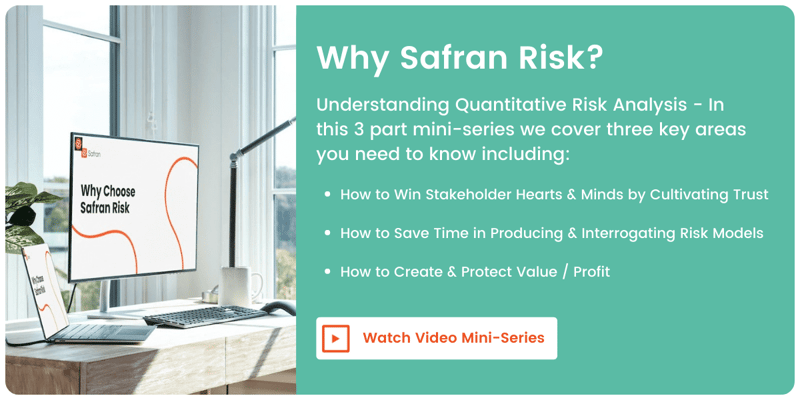The science of probability
The archeological records allow us to trace games of chance back to antiquity. In fact, a phrase that is common in multiple languages is, the die is cast. Originally a Latin phrase, it is attributed by Suetonius to Julius Caesar on January 10, 49 BC, as Caesar entered Italy at the head of his army in defiance of the Senate and began his long civil war. The phrase is still used to indicate that events have passed a point of no return.
Arguably, some of the greatest advances in science, diminishing the influence of fatalism, can be attributed to our understanding of probability and our ability to scientifically discern how likely one event will be over another. Gerolamo Cardano was one of the most influential mathematicians of the Renaissance, and was one of the key figures in the foundation of probability, which we explore in our blog post covering Bonini’s Paradox. Attributed to Cardano is the law of large numbers which states, the more a game is played, the better mathematical probability predicts the outcome. Essentially, although we don’t know exactly what will happen in the future, with the right data, the likelihood of future events can be calculated.
Adopting a culture of uncertain thinking
Some might say that, traditionally, projects have been run by simply rolling the dice! Convention has been for teams to adopt certain thinking by developing a single value or single-point cost estimate and schedules. Unfortunately, traditional approaches communicate a level of certainty or confidence that is often both misinterpreted and not warranted. Alternatively, budgeting in uncertain terms (ie, reporting a range of probable outcomes to promote uncertain thinking) is not only wise - private companies and public organizations recognize this as a fiduciary responsibility, to shareholders and taxpayers respectively.
Building upon the previous blog post Establishing The Right Risk Culture, it can be appreciated that, when teams move away from a fixed mindset, embrace change, uncertainty, and growth, this second capability improvement step can add multiplicative benefit. Fundamentally, successful data-literate organizations cease to discuss risk as a bad news story, but instead utilize it as a skillset or capability that delivers competitive advantage. This idea is unpacked in our blog post, Collecting Data That Matters.
Modern risk tools
Over the last decade or so, progressive Project Management Offices have benefited from adopting the first wave of quantitative risk analysis tools. The latest generation of tools are much more attractive to tech-savvy project professionals and the people on whom you are relying to carry your business forward into the future. Not only do modern risk tools integrate both cost and schedule inputs (more accurately quantifying the impact of time-dependent risk), they run in a fraction of the time taken by outdated algorithms, which frees up more time for analysis and problem solving. In addition, tools like Safran Risk are supported by dedicated professionals and an enthusiastic online user community. And by employing a consistent and structured approach for capturing risk data, project teams are better positioned to call upon historical or empirical data to help verify, corroborate or adjust team-generated uncertainty ranges. Team curiosity about historical performance will help promote a discovery and growth mindset, to a point where it becomes possible to significantly lower the assumption-to-knowledge ratio. This is covered in more detail in our blog post Avoiding The Risk of Using The Wrong Tool.
At stage gate close-out (or at any point in the project delivery lifecycle), the efficient capture and review of consistently structured, historical data, provides project teams with an opportunity to establish data feedback loops that enable risk intelligent strategies. Risk intelligent strategies provide organizations with protection through resilience, and value through agility. Apgar (2008) describes that these benefits are only achieved by “weighing risks effectively” and this can be achieved by, among other things:
- Storing retrieving, and acting upon relevant information (e.g., Bayesian reasoning in the context of risk response implementation effectiveness)
- Communicating effectively
- Adjusting to new circumstances
To reiterate, risk intelligent strategies delivering these characteristics provide competitive advantage, because they offer a level of resilience and agility that is not available to other, less capable organizations.
Data science – turning information into action
Ultimately, curious, continually improving, leading-edge PMOs (referenced in our previous blog post Establishing the Right Risk Culture) are able to employ tools such as Safran Risk to position themselves for a new era of Project Controls that is underpinned not simply by probability theory, but the broader field of Data Science. In effect, by consistently structuring critical cost and schedule information in one single table, Safran Risk can help future-proof your PMO and Project Controls function. This opens the door for predictive and prescriptive modelling as you accumulate more information about your completed projects.
Data science is defined as, the analysis of data using the scientific method, with the primary goal of turning information into action. For many years, the convention within the Project Controls community has been to solve problems by relying upon deductive reasoning to yield deterministic and probabilistic outcomes. Data Science encourages a shift towards inductive or pattern-based reasoning. Inductive reasoning (probable conclusions based on evidence provided), working in tandem with deductive reasoning (if 1st principles are true then X must also be correct) and exploratory data analysis, provide a means to form or refine hypotheses and discover new analytic paths. Both traditional and newer data-centric methods lead to probabilistic outcomes, and with this rebalanced focus there is a catalyst for exciting change.
Essentially, Data Science creates an environment where models of reality no longer need to be static and empirically based. Instead, models are constantly tested, updated and improved, until better models are found, as outlined in our Real-Time Scenario Planning blog post. Employed in conjunction with risk intelligent strategies, a learning organization is granted the ability to avoid unrewarded risk and pursue rewarded risk respectively.
Are you a senior leader within the construction and engineering industry? Have you equipped your project management delivery teams with best-in-class tools? Are you certain that your organization and your teams consider themselves future-ready? Doubt and continual improvement are your friends in disruptive times like these. Reach out and contact a Safran expert if you need a trusted advisor to help stress-test any of your assumptions.




